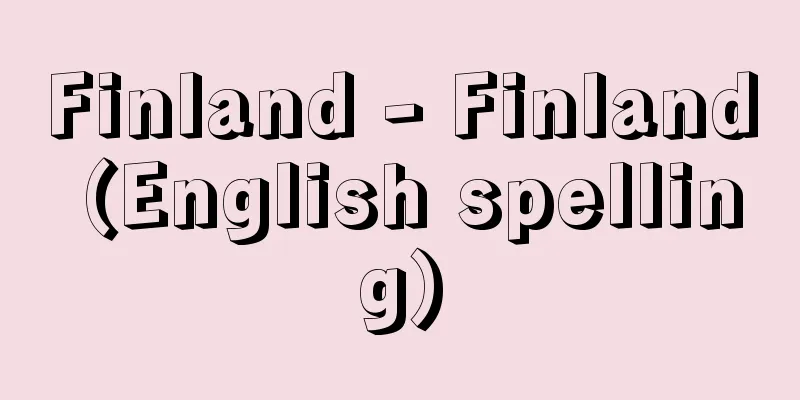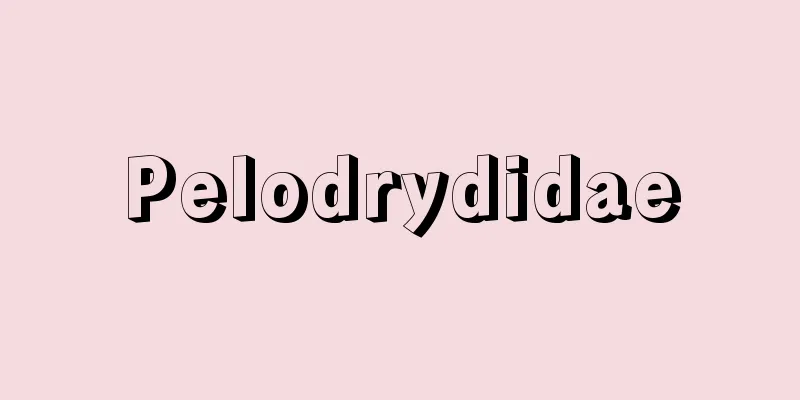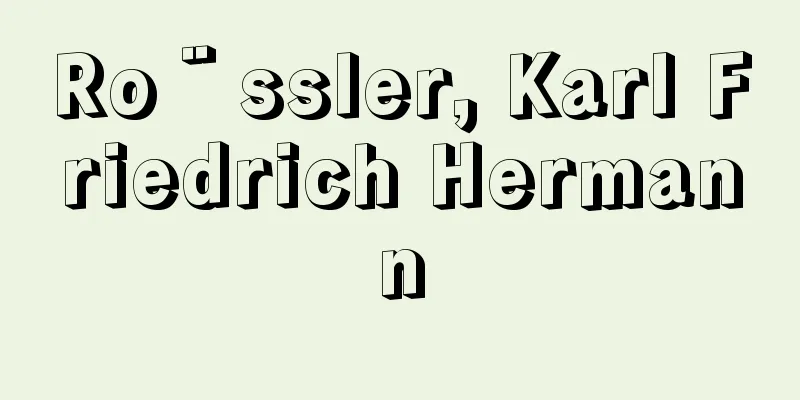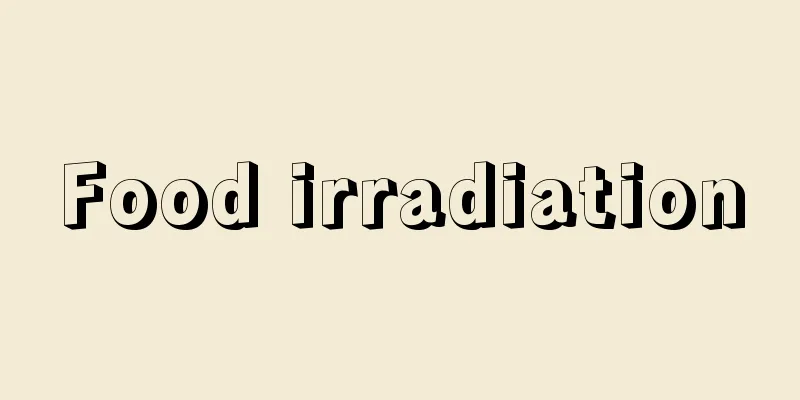Finland - Finland (English spelling)

|
A republic located in northern Europe, at the base of the Scandinavian Peninsula. Its official name in Finnish is the Republic of Suomi, and its Swedish name is Republiken Finland. It is long and narrow from north to south, stretching from 60 to 70 degrees north latitude. It faces the Gulf of Finland to the south, the Gulf of Bothnia to the west, and borders Russia to the east, Norway to the north, and Sweden to the northwest. Just under one-third of the country is in the Arctic Circle, and although the climate is cold, agriculture and forestry are thriving. Its area is 338,145 square kilometers, of which 33,522 square kilometers are inland waters, and it is known as a country of forests and lakes, as the "suo" in its official name "Suomi" means lakes and marshes. Its population is 5,206,295 (2003). Its capital is Helsinki. The national flag is a white background with a blue cross, symbolizing the white of snow, the blue of the lake, and the Christian cross. The national anthem is "Maamme" (Praise the Fatherland), with lyrics by J. L. Runeberg and music by F. Pasius. Located between Russia and Sweden, it has been historically dominated and influenced by them, but its ethnic and cultural characteristics, which are different from those of either country, were finally internationally recognized when it gained independence in 1917. The people have a high cultural and economic standard, and are hardworking and earnest. After World War II, it played the role of a buffer zone between the powers of East and West, and although its position changed after the end of the Cold War, it continues to make efforts for peace, such as providing support to refugees. [Hideo Tsukada] NatureAlmost the entire area is made up of Precambrian granite and gneiss, and in the southeast there is a special type of granite called rapakivi (originally meaning "broken rock"). Since the disappearance of the glaciers, the ground has been rising along the coast of the Gulf of Bothnia, resulting in new clayey alluvial soil. It is thought that the most recent glacial and postglacial periods were added to the flat surface of the shield that was formed by erosion of the old stable land mass. Overall, the area is lower from north to south and from east to west. Most of the 60,000 lakes are concentrated in the central and southern lake area. Many of these lakes were formed when the long, multiple end moraine hills running from east-northeast to west-southwest blocked the north-south flow along the slope of the land, causing water to flow into the lake. The warm climate that destroyed the glaciers caused sea levels to rise, so that most of the country's low-lying shield land was once submerged under water, but the subsequent uplift of the ground put alluvial deposits on the surface, turning it into land. These alluvial deposits form fertile coastal and lakeside plains, but areas that remained above the highest sea level are covered in bare rock eroded by ice, and glacial landforms such as drumlins and eskers dominate the entire region, making agriculture difficult. The climate is mild in winter for its high latitude, due to the intrusion of low pressure systems from the North Atlantic and the influence of the inland sea. The average annual temperature is -0.4°C (-13.5°C in January) in Sodankylä in Lapland, and 4.7°C (-6.8°C in February) in Helsinki in the south. The average annual precipitation is 500-600 mm in most places, and precipitation occurs throughout the year, but in the south, it is relatively heavy in autumn. Drought in early summer and frost in summer are dangerous for agriculture, but the cold in winter is accepted by the people as a matter of course. More than temperature, seasonal differences in the hours of sunlight affect all aspects of culture, society, and economy. Even in Helsinki, the hours of sunlight in December are only 17 hours, due to cloudy skies. Apart from the tundra climate found in the mountainous regions of Lapland, the entire region belongs to the subarctic rainy climate. The Gulf of Finland and the Gulf of Bothnia have low salinity and freeze for 2-6 months. The vegetation is dominated by coniferous forests of pine and fir, with birch and alder added, but in the southern end it becomes a mixed forest including oaks, and in the northern part it gradually becomes dwarf and turns into tundra. The number of large wild animals such as bears has decreased, but there are still many elk even in the suburbs of the city. [Hideo Tsukada] GeographyAdministratively, the country was divided into 12 counties, but this was reduced to 5 in September 1997. The four basic natural divisions are Lapland, the transitional region, the coastal plain, and the lake plateau. Lapland corresponds to Lapland Province, and most of the Sámi people still live here. The Finns arrived late, and development was slow. Agriculture is unsuccessful due to the cold climate, so reindeer farming is practiced instead. Lumbering and other activities that utilize natural forests are carried out mainly in the city of Kemi, but it takes a long time for trees to grow, and reforestation is not profitable. It is the least developed region. The transitional region corresponds to Oulu County, centered on the county capital Oulu, and is part of the North Pohjamaa region. Historically, it was a buffer zone separating the Sámi people in the north from the Finnish and Swedish people in the south. Sedentary farmers in the south used the vast uncultivated land for hunting and fishing, and gradually the agricultural areas expanded northward, oppressing the Sámi people. Agriculture in the coastal areas is mainly dairy farming, while inland, logging has taken over, replacing the former slash-and-burn farming and tar burning. The coastal plain consists of the regions of South Pohjamaa, centered around Vaasa, Warsinaissuomi, centered around Turku, Häme, including Tampere, and Uusimaa, which stretches to the east and west of Helsinki, as well as parts of South Karjala (Karelia). It is an advanced economic region where Swedish residents have settled and cultivated land since ancient times, with a high proportion of grain and mixed farming in agriculture and not much forestry. Urbanization has progressed and industry is active, with about 70% of the total population concentrated in this region. It can also be said to be the most Germanic region. The lake plateau includes parts of Häme and South Karjala, but is centered on the Savo region, which consists of Kuopio and Mikkeli counties, and includes North Karjala, with its capital city of Joensuu. It is a somewhat closed forest area, where slash-and-burn agriculture was practiced until the end of the 19th century. It retains a strong individuality in terms of dialect and folk culture. Dairy farming and forestry by small-scale farmers are not very productive, and the rural population is rapidly decreasing. It can be said to be the most Finnish region. The country is sometimes divided along a northwest-southeast line, with the southwestern part called Cultural Finland and the northeastern part called Natural Finland. The Ahavenammaa Islands (aka the Åland Islands in Swedish) are separate from the four other regions and enjoy a high degree of autonomy. [Hideo Tsukada] historyThe first traces of human culture can be found from around 7000 BC. However, it is generally accepted that modern Finns are not their direct descendants, but are instead a people who migrated from the southern coast of the Gulf of Finland around the 1st century AD. Later, from the southwest to Lake Ladoga, three major tribes - Suomi, Hame and Karelian - were formed. In the 12th century, these tribes came under the control of Swedish crusaders one by one. Meanwhile, from the southeast, the Novgorod Republic was gaining power, and in 1323 the Treaty of Pakhikinasaari was signed between Sweden and the Novgorod Republic, finalizing the border, which divided Karelia into east and west. In the 16th century, Sweden broke away from Danish rule and the Protestant Reformation was carried out, leading to a Finnish translation of the New Testament (1548). Finnish troops gained fame during Sweden's rise in the 17th century, but the Great Northern War saw Finland become a battleground for rivalry between Sweden and Russia on several occasions. In 1809, in the aftermath of the Napoleonic Wars, Finland was annexed by Russia as an autonomous Grand Duchy with the Russian Tsar as its monarch, but the systems from the Swedish era were preserved, and as the country's outlines took shape for the first time, Finnish people began to feel more self-aware as Finns. Cultural movements such as the compilation of the national epic poem "Kalevala" (Kalevala) also gradually escalated into a struggle against the dominant Swedish language. However, from the end of the 19th century, due to the rise of Pan-Slavism and the need to defend St. Petersburg (Leningrad in the socialist era) amid international conflict, a policy of Russification was implemented to deprive Finland of its autonomy. In 1906, when the power of the Russian Tsar temporarily declined due to the Russo-Japanese War, the Estates' Assembly that had existed up until then was suddenly transformed into a unicameral parliament with universal suffrage. There were attempts to resist Russification through both violence and non-violence, but the Russian Revolution (1917) put an end to this, and Finland received recognition of its independence from the Lenin government. The following year, in 1918, a civil war broke out between the bourgeois government and the Social Democratic revolutionary forces, which ended with the victory of the former. Finland, newly born as a republic, then began to walk a difficult path in search of national security. In September 1939, Germany invaded Poland, starting the Second World War, and in October, shortly thereafter, the Soviet Union asked Finland for a territory exchange, citing the defense of Leningrad. Negotiations broke down due to Finland's uncompromising attitude, and the Soviet army began its invasion, plunging the country into the "Winter War" (First Soviet-Finnish War). Finland put up a poor fight and was forced to cede the southeastern part of the country. In 1941, the German-Soviet War broke out, and Finland was drawn into the Second Soviet-Finnish War (Continuation War). When Finland withdrew from the front line in 1944 after signing an armistice, the German army razed Lapland to the ground. On the other hand, although the Soviet Union was spared occupation, it was forced to provide a naval base, cede a significant amount of territory (12%), and pay reparations. After the war, Finland signed the Treaty of Friendship, Cooperation and Mutual Assistance with the Soviet Union in 1948, and aimed to maintain a neutral policy while adopting a cooperative approach toward the Soviet Union. However, the end of the Cold War and the collapse of the Soviet Union completely changed the international political environment surrounding Finland. Finland signed a basic treaty with Russia in 1992 based on the principles of equality and reciprocity, while also seeking to move closer to Western Europe, signing the Partnership for Peace Agreement with the North Atlantic Treaty Organization (NATO) in 1994, and joining the European Union (EU) in 1995, thus implementing new diplomatic and security policies adapted to the post-Cold War era. [Kenichi Tamao and Hajime Matsumura] PoliticsThe 1919 constitution gives broad powers to the president, who serves a six-year term. The parliament is unicameral, and elections are held using a proportional representation system. Small parties are divided, and traditionally coalition governments have often been formed between the leading Social Democratic Party, followed by the left-wing People's Democratic Union, and the centrist Center Party. The leadership of Kekkonen, a Center Party member who held the presidency continuously since 1956 until he resigned due to illness in October 1981, has been maintained due to the division of small parties. A left-right coalition government was formed for the first time in the 1987 general election, but in 1991 a conservative center-right government was formed, and in 1995 a coalition government centered on the Social Democratic Party was formed, reflecting changes in the environment such as the collapse of the Soviet Union, and the political situation remains somewhat unstable. Traditionally, the Social Democratic Party has been strong. In the 2000 presidential election, Tarja Halonen (1943- ) was elected, becoming the first female president, and was re-elected in 2006. In the 2003 general election, the Centre Party became the largest party, and since then, a coalition government centered on the Centre Party has been formed. The provinces, which divide the country into five parts including the Ahvenammaa Islands, are national administrative bodies, and the only local authorities are cities, towns and villages. Russia had a Treaty of Friendship, Cooperation and Mutual Assistance with the Soviet Union, but terminated this when the Soviet Union collapsed in 1992, and Russia joined the EU in 1995. However, since Russia's basic foreign policy is non-aligned neutrality, there is the issue of harmonizing its foreign and defense policies with those of the EU. The situation in which Finland was forced to place importance on its relations with the Soviet Union was called "Finlandization," but the country's diplomacy has always been aimed at contributing to international peace, and it actively participates in UN peacekeeping activities. Ahtisaari, who served as president from 1994 to 2000, was awarded the Nobel Peace Prize in 2008 for his contributions to resolving international conflicts. [Hideo Tsukada] Economy and IndustryUntil the 18th century, self-sufficient agriculture, including slash-and-burn agriculture, was the basis of economic activity, and fishing, hunting, and handicrafts, including ironworking, were mostly related to agriculture or rural areas. Forestry was also involved in wood tar production and cutting of mast lumber. These economic activities were located in the gap between the economic spheres of Western Europe and Russia. Since the second half of the 19th century, the country has been strongly influenced by the development of the New World and the Industrial Revolution, and forestry and the industries based on it have become the basis of the national economy. However, due to the narrowness of the domestic market, the industrial structure is biased toward wood-related industries and a few other industries such as metal machinery and shipbuilding. There are no confirmed deposits of oil or coal, and iron and copper mines are small. Cobalt and vanadium are only exported in small amounts, and the country is not blessed with mineral resources. Hydropower is also not blessed with a small head, unstable water volume, shallow lakes with small storage capacity, etc. Forest resources alone are widely utilized, but since it takes a long time for them to grow, it cannot be overestimated when considered as a relative issue with population density and agriculture. In agriculture, mixed farming and wheat and rye are cultivated in the favorable southwest, but overall dairy farming is the norm, with small farms of around 10 hectares per year. The country is at the limit of cultivation for all crops, and has repeatedly suffered from poor harvests due to midsummer frosts that even damaged pasture. However, most agricultural products are now self-sufficient, and dairy products, which cannot be exported due to their high cost, have been plagued by overproduction. Farmers obtain most of their cash income from forestry management and forestry work. High levels of mechanization have made forestry work highly productive, but this has instead led to the exclusion of farmers from forestry work and the isolation of a small number of specialized forestry workers, making farm management more difficult. Forests are managed intensively, but investments such as reforestation are more effective in the central and southern parts of the country, where growth is relatively fast. Fir is common in the south, but pine is found throughout the country except in northern Lapland, and in recent years birch has also come to be used as pulpwood. The fishing industry is limited to small-scale coastal fishing of sardines and herring in the Gulf of Finland and the Gulf of Bothnia. The once thriving salmon fishery has declined due to a decline in the stocks. In addition to food, clothing, and chemical products for the domestic market, the industry is characterized by forestry product processing and related machinery manufacturing, as well as icebreakers and other products that take advantage of the country's geographical location. According to 1993 statistics, forestry product processing and paper manufacturing together accounted for 20.5%, while metals and machinery accounted for 32.9%. In terms of export revenue, the former accounts for approximately 35%. In machinery, pulp and paper manufacturing plants and multipurpose forestry machinery are distinctive, and in forestry product processing, factories producing lumber products, paper, cardboard, pulp, plywood, etc. are located near coastal port cities and lake drainage points. The focus of production is shifting to high-value-added advanced processed products such as prefabricated houses and furniture made from lumber products. Nokia is also known as the world's largest manufacturer of mobile phones, and mobile phones are making up a large proportion of exports. Withdrawal from the European Free Trade Association (EFTA) in 1995 and joining the EU were in line with the reality of trade, and the country has a large amount of trade with Germany, the UK, the US and neighboring Sweden. As of 2000, exports were approximately 45.95 billion dollars and imports were approximately 34.14 billion dollars. In 1999, the country joined the European Monetary Union (EMU) and adopted the euro as its currency. The total length of railways is 5,859 km (1995), most of which is state-owned. The total length of roads is 79,166 km (1995). In addition, there are 6,300 km of navigable water through rivers, canals, and numerous lakes. There are two airlines, Finnair and Kalair. [Hideo Tsukada] societyThe official languages are Finnish and Swedish, and about 6% of the population speaks Swedish in the west and south, but the Swedish-speaking population is declining due to low birth rates and high emigration rates. The Sámi people (1,726 people, 1994) live in Lapland and speak the Sámi language. The call to protect the interests of linguistic minorities is respected, but it is one of the difficult issues. Although racial intermarriage is progressing, the Finnish-speaking Finnish people have well maintained their cultural characteristics as a branch of the Finno-Ugric language family. Their closest linguistic relatives are the Estonian people across the Gulf of Finland, and they can communicate with each other. Since the second half of the 18th century, the Finnish language and the national epic poem "Kalevala" were the starting point of Finnish nationalism in opposition to the cultural domination of Sweden and Russia. The regions of Lapland, the coastal plain, and the lake plateau are thought to have had Sami, Swedish, and Finnish as dominant languages in the Middle Ages, respectively, and it can be seen that the dominance of Finnish strengthened and the area in which it was spoken expanded. The natural population growth rate is low at around 0.5%, and there is a lot of emigration. The number of emigrants, which reached about 180,000 in the 1960s, decreased in the 1970s, but migration to North America, Sweden, Australia, and other places is still suppressing population growth. The gross domestic income (GNI) per capita in 2000 was $24,900, but income disparities are more evident between industries and regions than between classes of urban residents. The level of urban industry is high, while agriculture and forestry is low. In 1966, the per capita income index in Helsinki was 164, while in the northern rural areas it was 65 (national average 100), but by 1976 it had fallen to 135 and 85. This was due in part to investment in the north, but also to the internal migration of population from the north to the southern urban areas. In the northeastern rural areas, there have been phenomena such as abandoned villages and reorganization of settlements, and economic and social changes have been rapid since the 1960s. The outflow of people from villages who cannot adapt to urban life has caused social problems such as unemployment and alcoholism. At the same time, the housing shortage in cities is a serious problem. The social security system, with old-age pensions, disability pensions, and health insurance as its pillars, is improving year by year, and coupled with the medical service system and completely free compulsory education, has made the country a highly advanced welfare state. In terms of education, a new school system has created integrated schools, and compulsory education is now nine years. In addition to these, there are various vocational schools of different lengths, and high schools whose main purpose is to prepare students for further education. There are 23 universities, including 10 comprehensive universities, as well as technical universities, economic universities, and art universities, three of which teach exclusively in Swedish. Swedish-speaking citizens are guaranteed the opportunity to receive an education in Swedish in secondary and primary education as well. The state religion is the Evangelical Lutheran Church, but freedom of religion is guaranteed. 85.9% of the population are Lutheran, and 1.1% are Greek Orthodox, mainly in the eastern part of the country (1994). There are four public television stations and one private television station broadcasting commercially. There are three public Finnish and one Swedish radio stations, as well as 59 local stations. Of the 62 general newspapers, 10 are in Swedish (1996). [Hideo Tsukada] cultureFor the Finns who crossed the Gulf of Finland and the Karelian Isthmus to invade a world of natural conditions such as a cold climate, extreme seasonal differences in the length of day and night, and vast coniferous forests, the way of life of forest cultivators and people heading for the pokhola, or northern lands, is a basic character sung about in the Kalevala. Influenced by the cultural spheres of Russia in the east and Scandinavia in the west, they have assimilated into Europe and, while undergoing transformation, have inherited a unique culture. Finns are said to love solitude. When talking about their summer homes, city dwellers are most proud of the fact that they are located on a lake and have a comfortable sauna, as well as how far away they are from other people's homes, so that they don't have to face anyone when they stay there on the weekend. This may be a remnant of the need for vast forest land when they practiced slash-and-burn agriculture. It is also a great pleasure to spend weekends and summer holidays at these homes and pick strawberries and mushrooms. They are uneasy people if they are not surrounded by nature. Their love of solitude makes Finns immerse themselves in reading books during the long, dark winters. However, it is not necessarily true that they love solitude. The life in the valley depicted in "Moomin" by Finnish fairy tale writer T. Jansson represents Finnish rural society, where people often worked together. The concept of private ownership of land was introduced late, although it varies by region. They also love to entertain. In the eastern part of the country, they are particularly cheerful, and the custom of spending time together as a family remains. The rich Folk House Museum on Seurasaari Island in Helsinki demonstrates the unique characteristics of such ethnic culture and society. What enabled them to endure the long period of foreign rule and bring about their independence must have been their pride in their own culture, the hard work of their peasants, and their tenacious and indomitable spirit of perseverance, all of which was based on the language they had continued to protect. In other words, it was their "sisu." Sibelius' symphonic poem "Finlandia" is said to have themes of love for the beautiful and harsh nature, obsession with independence, and joy, and the Finns found the "sisu" in it and were satisfied. Architect Albert Aalto has created many works, including the town's pride and joy, the functional and beautiful library. He has created simple and rustic yet bold designs and excellent functionality in textile products, furniture, and fixtures, which have earned him worldwide acclaim, but at the root of it all is the free-spirited peasant spirit of Mori. One can see the pioneering spirit of respecting tradition but not being bound by it. [Hideo Tsukada] Relations with JapanHistorically, Finnish people have had a very friendly attitude towards Japan. Many intellectuals remember that the Russian Revolution, which led to Finnish independence, was brought about by Russia's defeat in the Russo-Japanese War, and that Japan supported Finland during the League of Nations' discussions on the ownership of the Ahvenammaa Islands, which became a dispute with Sweden. Nordenskield, the geographer who introduced Japan to Europe, was a Finnish-Swedish man. Today, there is a sense that Japan shares a common, huge neighbor, Russia, and that both countries joined forces with Germany during World War II. In general, Finns are quite interested in Japan. A Finnish translation of Basho's Oku no Hosomichi has been published. There are many Japanese musicians and others who are active in Finland. Mutual understanding is gradually progressing through exchange students and other means, and Finnish Christian missionaries in Japan have been active for a long time. In 2000, exports to Japan were $862.08 million and imports from Japan were $1,244.14 million, meaning that Japan had a large export surplus, but the trade volume is not large. Exports to Japan consist mainly of pulp, paper, and non-ferrous metals. Imports consist mainly of automobiles, electrical machinery, and other machinery. Exports to Japan of prefabricated houses, sauna equipment, textile products, mobile phones, and other items are gradually increasing, but are not enough to eliminate the trade deficit with Japan. [Hideo Tsukada] "Nordic History" edited by Tsunoda Fumiei (Old Edition: World Histories of the World 6, 1955, Yamakawa Publishing)" ▽ "World Geography 6: Europe I" edited by Kiuchi Shinzo (1979, Asakura Publishing)" ▽ "Modern Nordic History" by Momose Hiroshi (Modern World History 28, 1980, Yamakawa Publishing)" ▽ "Kingdom of Sweden and Republic of Finland" edited by the Ministry of Foreign Affairs (New Edition: World Handbook Series, 1983, Japan Institute of International Affairs)" ▽ "Finland's Neutral Policy" by Ishiwata Toshiyasu (1992, Kobundo Publishing)" ▽ "Finland" edited by the Finnish Embassy (1993, NTT Mediascope)" ▽ "Finland" by Phyllis L. Schuster, translated by Aoyama Tamotsu (1996, Kokudosha)" ▽ "Nordic History" edited by Momose Hiroshi et al. (New Edition: World Histories 21, 1998, Yamakawa Publishing)" ▽ "Finland's Foreign Policy" by M. Jacobson, translated by Hiroshi Kamikawa (Japan Institute of International Affairs, International Affairs Paperbacks)" "Kalevala, Vol. 1 and 2, edited by Lönnrott, translated by Tamotsu Koizumi (Iwanami Bunko)" [References] | | | | | | | | | | | | | [Supplementary material] |"> Finland flag ©Shogakukan Illustration/Shogakukan Creative "> Finland Location Map Source: Shogakukan Encyclopedia Nipponica About Encyclopedia Nipponica Information | Legend |
|
ヨーロッパ北部、スカンジナビア半島の付け根に位置する共和国。フィンランド語の正称はスオミ共和国Suomen Tasavalta、スウェーデン語名Republiken Finland。北緯60度から70度にわたり、南北に細長い。南はフィンランド湾、西はボスニア湾に面し、東はロシア、北はノルウェー、北西はスウェーデンと国境を接する。国土の3分の1弱が北極圏で、気候は寒冷であるが農林業は盛んである。面積33万8145平方キロメートル。うち3万3522平方キロメートルが内水面で、森と湖の国といわれ、正称「スオミ」のsuoは湖沼を意味する。人口520万6295(2003)。首都はヘルシンキ。 国旗は白地に青十字で、雪の白、湖の青、キリスト教の十字を象徴する。国歌はJ・L・ルネベルィ作詞、F・パシウス作曲の『Maamme』(たたえよ 祖国を)。 ロシアとスウェーデンの間にあって、歴史的にその支配・影響を受けてきたが、両国のいずれとも異なる民族的・文化的特質が1917年の独立でようやく国際的に認められた。国民の文化的・経済的水準は高く、国民性は勤勉でまじめである。第二次世界大戦後は東西両勢力の緩衝地帯としての役割を果たし、冷戦終結後は立場は変わったが、いまも難民支援など平和への努力をつねに怠らない。 [塚田秀雄] 自然ほぼ全域が先カンブリア時代の花崗(かこう)岩と片麻(へんま)岩からなり、南東部にはラパキビrapakivi(本来は「砕かれた岩」の意)とよばれる特殊な花崗岩がある。ボスニア湾沿岸では氷河の消滅以後、地盤が隆起しつつあるために、新しい粘土質の沖積土がある。古い安定陸塊が侵食によって楯状地(たてじょうち)の平坦(へいたん)面を形成したところに、地質学的にはもっとも新しい氷期と後氷期の作用が加わったと考えられる。全体として北から南、東から西へと低くなっている。6万に達する湖の大部分は、中南部の湖水地帯に集中する。それらの湖の成因の多くは、東北東―西南西に走る長大で複数のエンド・モレーン丘(終堆石(しゅうたいせき)丘)であるサルパウスセルカが、国土の傾斜に沿う南北の流れをせき止めたために湛水(たんすい)したものである。氷河を消滅させた温暖な気候は海水位を上昇させたために、低平な楯状地からなる国土のほとんどが一度は水面下に沈み、その後の地盤の隆起で沖積層を表面にのせて陸化した。その沖積層は肥沃(ひよく)な海岸・湖岸平野をなすが、最高海水位より高くとどまった地域は氷食された裸岩に覆われており、ドラムリン、エスカーなどの氷河地形が全域を支配していて農業は困難である。 気候は、北大西洋の低気圧の侵入があり、内海の影響もあって、高緯度のわりには冬が温暖である。年平均気温はラップランドのソダンキュラで零下0.4℃(1月零下13.5℃)、南部のヘルシンキで4.7℃(2月零下6.8℃)である。年降水量は500~600ミリメートルの所が多く、年間通じて降水があるが、南部では秋に比較的多い。初夏の干魃(かんばつ)と夏の霜が農業には危険であるが、冬の寒さは当然のこととして国民に受け止められている。気温以上に日照時間の季節差が、文化、社会、経済のあらゆる面に影響している。ヘルシンキでも12月の日照時間は、曇天の影響もあって、わずかに17時間である。ラップランドの山岳地域にツンドラ気候がみられるほかは、全域が亜寒帯多雨気候に属している。フィンランド湾やボスニア湾は塩分濃度が低く、2~6か月間は凍結する。 植生はマツ、モミの針葉樹林帯が支配的で、これにシラカバ、ハンノキなどが加わるが、南端部ではカシなどを含む混交林となり、北部ではしだいに矮化(わいか)し、ツンドラに変わる。クマなど大形の野生動物は減少したが、オオジカは都市の近郊にもなお数多い。 [塚田秀雄] 地誌行政上は12県に分けられていたが、1997年9月より5県となった。一般的には自然によるラップランド、漸移地域、海岸平野、湖沼台地の4区分が基本となる。 ラップランドはラッピ県に相当し、いまもサーミ人のほとんどがここに住む。フィン人の進出は遅く、開発が遅れ、農業は寒冷な気候のために振るわず、トナカイ飼育が行われる。天然林を利用した製材などはケミ市を中心に行われているが、樹木の成長に要する期間が長く、植林は採算がとれない。もっとも未開発な地域である。 漸移地域は、県都オウルを中心とするオウル県に相当し、北ポヒャンマー地方にあたる。歴史的には長く北のサーミ人と南のフィン人やスウェーデン人の地域を隔てる緩衝地帯であった。南部の定住的な農耕民が広大な未開地を狩猟・漁労の場とし、しだいに農業地域が北進して、サーミ人を圧迫したのである。沿岸部の農業は酪農が主で、内陸部はかつての焼畑やタール焼成にかわって原木の切り出しが盛んである。 海岸平野は、バーサを中心とした南ポヒャンマー、トゥルクを中心都市とするワルシナイススオミ、タンペレなどを含むハメ、ヘルシンキの東西に広がるウーシマーの各地方と南カリャラ(カレリア)の一部からなる。古くからスウェーデン系住民によって定住農耕が行われた先進経済地域であり、農業では穀作、混合農業の比率が高く、林業はあまり盛んではない。都市化が進み、工業も活発で、全人口の約70%がこの地域に集中する。もっともゲルマン的な地域ともいえる。 湖沼台地はハメと南カリャラの一部を含むが、クオピオ県とミッケリ県からなるサボ地方が中心で、ヨエンスーを中心都市とする北カリャラが加わる。やや閉鎖的な森林地域で、19世紀末まで焼畑が行われた。方言、民俗文化の点でも強い個性をとどめている。小規模農家による酪農と林業は生産性が低く、農村人口は急速に減少しつつある。もっともスオミ的な地域といえる。 国土を北西―南東の線で区分して、南西部を文化的フィンランド、北東部を自然的フィンランドとよぶこともある。また、アハベナンマー諸島(スウェーデン語名オーランド諸島)は、高度の自治権を有する以上の4区分された地域とは別個の地域となっている。 [塚田秀雄] 歴史最初の人類文化の痕跡(こんせき)がみいだされるのは紀元前7000年ごろからである。しかし現代フィンランド人はその直接の子孫ではなく、紀元後1世紀ごろにフィンランド湾南岸から移住するようになった民族とするのが定説である。その後、南西部からラドガ湖にかけて、スオミ、ハメ、カレリアの三大部族が形成された。12世紀になると、スウェーデンからの十字軍によってこれらの部族は次々とその支配下に入る。一方、南東からはノブゴロド共和国が勢力を伸ばし、1323年スウェーデンとノブゴロド共和国との間にパヒキナサーリ条約が結ばれ、国境が確定されたが、これによってカレリアは東西に二分された。 16世紀に入り、スウェーデンがデンマークの支配を脱し宗教改革が断行されると、『新約聖書』のフィン語訳(1548)もなされる。17世紀のスウェーデン興隆期にはフィン人部隊は勇名をはせたが、大北方戦争を機にフィンランドは何度かスウェーデンとロシアの角逐の場と化した。1809年には、ナポレオン戦争のあおりを受けてロシア皇帝を君主とする自治大公国としてロシアに併合されるが、スウェーデン時代からの諸制度は温存され、初めて国としての輪郭ができるなかでフィンランド人としての自覚が高まった。民族叙事詩「カレバラ」(カレワラ)集成などの文化運動も、しだいに支配言語であるスウェーデン語との闘争へと高揚していった。 しかし19世紀末からは汎(はん)スラブ主義の高まり、国際対立のなかでのペテルブルグ(社会主義時代のレニングラード)防衛の必要などから、フィンランドの自治権を奪おうとするロシア化政策が強行される。日露戦争の影響で一時ロシア皇帝の勢力が後退した1906年には、それまでの身分制議会が一挙に普通選挙による一院制の国会に変革された。ロシア化には暴力・非暴力による抵抗が試みられたが、ロシア革命(1917)がそれに終止符を打ち、レーニン政権から独立の承認を受けた。 翌1918年ブルジョア政府勢力と社民党革命勢力との内戦が勃発(ぼっぱつ)し、前者の勝利に終わった。共和国として新生したフィンランドは、このあと、国の安全保障を求めて苦難の道を歩み始める。1939年9月、ドイツがポーランドに侵入し第二次世界大戦が開始されると、その直後の10月、ソ連はレニングラードの防衛を理由としてフィンランドに領土の交換等を求めた。フィンランド側の非妥協的姿勢により交渉は決裂し、ソ連軍が侵攻を開始、「冬戦争」(第一次ソビエト・フィンランド戦争)に突入する。フィンランドは善戦及ばず、南東部を割譲せざるをえなかった。1941年独ソ戦が勃発し、フィンランドは第二次ソビエト・フィンランド戦争(継続戦争)に巻き込まれる。1944年休戦協定を結んでフィンランドが戦線を離脱すると、ドイツ軍はラップランドを徹底的に破壊した。一方、ソ連に対しては、占領は免れたものの海軍基地の提供、大幅な(12%)領土割譲、賠償などを強いられた。 戦後フィンランドは1948年にソ連と「友好協力相互援助条約」を結び、対ソ協調路線をとりつつ、中立政策を志向した。しかし、東西冷戦の終結とソ連の崩壊はフィンランドをめぐる国際政治環境を一変させた。フィンランドは、1992年にロシアと平等・互恵を原則とする基本条約を結ぶかたわら、西欧への接近を図り、1994年に北大西洋条約機構(NATO(ナトー))との間で平和のためのパートナーシップ協定を締結、さらに1995年にはヨーロッパ連合(EU)に加盟するなど、冷戦後の時代に適応した新たな外交・安全保障政策を講じている。 [玉生謙一・松村 一] 政治1919年制定の憲法で任期6年の大統領に広範な権限を与えている。議会は一院制で、比例代表制の選挙が行われる。小党が分立し、従来は第一党の社会民主党およびこれに続く左翼の人民民主同盟と、中間派の中央党の三党で連立内閣を組織することが多かった。1956年以来、1981年10月病気辞任するまで連続して大統領の地位にあった中央党出身のケッコーネンの指導力は、小党分立の状況によって維持されてきた。1987年の総選挙で初めて左右連合政権が成立したが、1991年には、保守中道政権、1995年には、社会民主党を中心にした連立内閣になるなど、ソ連の崩壊など環境の変化を反映しながら、やや不安定な政情が続く。伝統的に社会民主党の勢力が強い。 2000年の大統領選挙ではタルヤ・ハロネンTarja Halonen(1943― )が当選、初の女性大統領となり、2006年再選を果たした。2003年の総選挙では中央党が第一党となり、以後、中央党を中心とした連立内閣が組まれている。 アハベナンマー諸島を含めて国内を5に区分する県は国の行政機関であり、地方自治体は市町村のみである。 ソ連とは友好協力相互援助条約を結んでいたが、1992年に、ソ連崩壊とともにこれを破棄し、1995年にはEUに加盟した。しかし、外交の基本政策は非同盟中立であるから、EUの外交・防衛政策との調和の問題がある。 かつて対ソ連関係を重視せざるをえなかった状況を「フィンランド化」とよんだが、この国の外交はつねに国際平和への貢献を指向しており、国連の平和維持活動にも積極的に参加している。 なお、1994年から2000年まで大統領を務めたアハティサーリが、国際紛争の解決に貢献したとして2008年にノーベル平和賞を受賞している。 [塚田秀雄] 経済・産業18世紀までは焼畑を含む自給的農業が経済活動の根幹であり、漁業、狩猟、製鉄を含む手工業もほとんどが農業あるいは農村にかかわっていた。林業も木タール製造やマスト材の伐採が行われた。これらの経済活動は、西ヨーロッパとロシアの両経済圏の谷間に置かれていた。19世紀の後半以降、新大陸の開発や産業革命の影響を強く受けるようになり、林業とそれに基づく工業が国家経済の基本となった。しかし産業構造は国内市場の狭小も原因となって、木材関連産業と金属機械や造船など一部の産業に偏っている。石油、石炭の埋蔵は確認されず、鉄、銅の鉱山は小規模である。コバルト、バナジウムがわずかに輸出される程度で鉱物資源には恵まれていない。水力にも、落差が小さく水量が不安定、湖が浅く貯水能力が小さいなど、恵まれてはいない。森林資源のみは大いに活用されているが、生育に要する期間が長いため、人口密度、農業との相対的問題として考えれば過大評価はできない。 農業は、条件に恵まれた南西部で混合農業や小麦、ライムギの主穀農業が行われるが、全体的には10ヘクタール程度の小農家による酪農が中心である。すべての農作物の栽培限界にあたるこの国では、牧草でさえ被害を受ける真夏の霜による凶作が繰り返された。しかし、現在ほとんどの農産物は自給能力を有しており、高コストのために輸出能力を欠く酪製品は過剰生産に悩んできた。農民は現金収入の多くを林業経営と林業労働から得ている。高度の機械化が進んだため林業労働の生産性は高いが、これがかえって農民を林業労働から排除し、少数の専門林業労働者を分離することとなり、農家経営を困難にしつつある。林地は集約管理されるが、植林などの投資が有効なのは成長が比較的早い中部以南である。モミは南部に多いが、マツはラップランド北部を除く全域に分布し、これらとともに、近年はシラカバもパルプ用材として利用されるようになった。水産業はフィンランド湾、ボスニア湾で小規模なイワシ・ニシン漁を主とした沿岸漁業がみられるにすぎない。かつて盛んであったサケ漁は資源量が減少し衰退した。 工業は、国内市場向けの食料、衣料、化学製品などがあるほか、林産加工業とそれに関係する機械製造、砕氷船など地理的条件を生かしたものに特色がある。1993年の統計では、林産加工と製紙業あわせて20.5%、金属・機械が32.9%を占める。輸出収入でみると前者は約35%に達する。機械類ではパルプ・紙製造プラントや多目的林業用機械に特色があり、林産加工では製材製品、紙、板紙、パルプ、合板などの工場が沿岸の港市や湖の排水点の近くに立地する。製材製品のプレハブ住宅、家具などのように付加価値の大きい高次加工品に製造の重点が移りつつある。また、ノキアは携帯電話機製造で世界最大手のメーカーとして知られ、輸出における携帯電話機の占める割合も高くなっている。 1995年のヨーロッパ自由貿易連合(EFTA(エフタ))からの離脱、EU加盟は、貿易については、実態に即したものであり、ドイツ、イギリス、アメリカや隣国スウェーデンとの取引が大きい。2000年の段階では、輸出は約459億5000万ドル、輸入は約341億4000万ドルである。 なお、1999年ヨーロッパ通貨同盟(EMU)に加盟、通貨にユーロを導入している。 鉄道の総延長は5859キロメートル(1995)で、大半が国有である。道路総延長は7万9166キロメートル(1995)。ほかに、河川、運河、数多い湖を通じ、総延長6300キロメートルに及ぶ航行可能水面をもつ。航空はフィンランド航空とカル航空の2社がある。 [塚田秀雄] 社会公用語はフィン語(フィンランド語)とスウェーデン語であり、西部・南部に約6%のスウェーデン語を話す人々が住むが、出生率が低く国外への移住率が高いためにスウェーデン語人口は減少している。ラップランドにはサーミ人(1726人、1994)が住み、サーミ語を話している。言語上の少数派の利益を擁護せよという声は尊重されてはいるが、困難な問題の一つである。人種的には混血が進んでいるが、フィン語を話すフィン民族は、フィン・ウゴル語族の一語派としてその文化的特質がよく維持されてきた。言語上もっとも近縁であるのは、フィンランド湾を挟んだ対岸のエストニア民族で、相互に意思疎通が可能である。18世紀後半以来、スウェーデンやロシアの文化的支配に対抗して、フィンランド民族主義の出発点となったのはフィン語であり、民族叙事詩「カレバラ」であった。ラップランド、海岸平野、湖沼台地という地域区分は、中世における優勢な言語としてサーミ語、スウェーデン語、フィン語をそれぞれ有していたとも考えられ、フィン語の支配力が強化され、その話される地域を拡大したとみることができる。人口の自然増加率は0.5%台と低いうえに、国外移住が多く、1960年代に約18万人ほどに達した移住者は1970年代に入って減ったものの、なお北アメリカ、スウェーデン、オーストラリアなどへの移住が人口の増加を抑えている。 2000年の1人当り国内総所得(GNI)は2万4900ドルであるが、所得の格差は都市住民の階層間におけるよりも、産業間、地域間の差として強く現れている。都市的産業の水準の高さに対し、農林業は低い。1人当り収入は1966年にヘルシンキで指数164に対し、北部の農村では65(全国平均100)であったが、1976年には135と85に縮小した。これは北部への投資が進んだこともあるが、北部から南部都市域への国内人口移動の結果でもある。北東部の農村では廃村や集落の再編成などの現象もみられ、1960年代以降の経済・社会の変化は急激であった。都市の生活に適応できない村からの流出人口は、失業、アルコール中毒などの社会問題を生んでいる。同時に、都市における住宅不足は深刻な問題である。 老齢年金、就業不能者年金、健康保険を柱とする社会保障制度は年々充実し、医療サービス制度や義務教育の完全無料化などと相まってこの国を高度の福祉国家にしている。教育の面でも、新しい学校制度によって統合学校がつくられ、義務教育は9年制となった。その上に各種の期間の異なる職業学校と高等教育への進学を主目的とする高等学校がある。大学は10の総合大学のほか、工科大学、経済大学、芸術大学などを含めて23あり、そのうち3大学はもっぱらスウェーデン語で授業を行う。中等・初等教育においても、スウェーデン系国民に対するスウェーデン語による教育機会が保障されている。 宗教は福音(ふくいん)ルーテル派教会が国教となっているが、信仰の自由は保障されている。国民の85.9%がルーテル派教会、1.1%が東部を中心にギリシア正教を信じている(1994)。 テレビは公共放送4系統があり、民間テレビ1局が商業放送を行っている。ラジオは公共放送のフィンランド語3系統、スウェーデン語1系統があるほか、ローカル局が59局ある。一般新聞62紙中、10紙がスウェーデン語である(1996)。 [塚田秀雄] 文化寒冷な気候、季節による昼夜の長さの極端な違い、広大な針葉樹林という自然条件の世界に、フィンランド湾やカレリア地峡を越えて入り込んだフィン人にとって、森林の開墾者、ポヒョラすなわち北の土地を目ざす者というあり方は「カレバラ」に歌い継がれた基本的な性格である。東のロシア、西のスカンジナビアの文化圏の影響を受けながら、ヨーロッパに同化し、変容しつつもなお個性ある文化を受け継いでいる。 フィン人は孤独好きだといわれる。都市生活者にとって、夏の別荘を話題にする場合、それが湖畔にあって気分のよいサウナがついていることはもちろん、他人の別荘からどれだけ離れていて、週末に滞在してもだれとも顔をあわせなくともよいということが最大の自慢の種である。焼畑農業をしていた際に広大な林地を必要としたことの名残(なごり)かもしれない。この別荘で週末や夏の休暇を過ごして、イチゴやキノコを摘むのも大きな喜びである。自然に包まれていなければ不安な人々である。その孤独好きは、長く暗い冬の間、フィン人をして読書に没頭させる。けれども孤独好きというのはかならずしも正しくない。フィンランドの童話作家T・ヤンソンの描いた「ムーミン」の谷間の生活は、協力して働くことの多かったフィンランド農村社会を表している。土地の私的所有の概念が入ったのは、地域によって異なるが、一般に遅かった。客好きでもある。東部ではとくに陽気で、一族集まって時を過ごす習慣が残った。ヘルシンキのセウラサーリ島にある豊かな民家博物館はそのような民族文化・社会の特徴を示している。 長い異民族支配に耐えて独立をもたらしたのは、守り続けてきた言語を核に、独自の文化に対する誇り、農民の勤勉さ、粘り強く不屈のがんばりを発揮する精神すなわちシスsisuであろう。シベリウスの交響詩『フィンランディア』は美しく過酷な自然への愛着、独立への執念、喜びを主題とするといわれるが、フィン人はそこにシスをみいだして満足する。 建築家アルバール・アールトの作品は数多いが、たとえば機能的で美しい図書館が町の誇りになっている。繊維製品、家具、什器(じゅうき)などにおいても、単純・素朴ながら大胆なデザイン、優れた機能をもつものがつくりだされ、世界的な評価を得ているが、その根底には森の自由な農民精神がある。伝統は尊重するが、それにとらわれるばかりではない開拓者精神をうかがうことができる。 [塚田秀雄] 日本との関係フィンランド国民の対日感は歴史的にはごく友好的である。フィンランド独立の契機となったロシア革命は日露戦争におけるロシアの敗北がもたらしたという認識と、スウェーデンとの間で帰属が問題になったアハベナンマー諸島についての国際連盟の討議に際して日本がフィンランドを支持したことを記憶する知識人も多い。ヨーロッパに日本を紹介した地理学者ノルデンシェルドはスウェーデン系フィンランド人であった。現在では、共通する巨大な隣人ロシアを有するという感じ方も、第二次世界大戦中、ともにドイツと手を結んだという意識もある。一般にフィン人は日本についてかなりの関心をもっている。芭蕉(ばしょう)の『おくのほそ道』はフィンランド語訳が出版されている。日本人音楽家などでフィンランドで活躍する人も少なくない。交換留学生などを通じて、じみながら相互理解は進みつつあり、日本におけるフィン人キリスト教宣教師の活動も古くから活発であった。 2000年には日本への輸出8億6208万ドル、日本からの輸入12億4414万ドルで、日本の大幅輸出超過であるが、貿易額は大きくない。日本への輸出はパルプ・紙、非鉄金属が中心である。輸入は自動車、電気機械、その他機械類が多い。プレハブ住宅、サウナ設備、繊維製品、携帯電話機などの日本への輸出が漸増しているが、対日貿易赤字を解消するまでには至らない。 [塚田秀雄] 『角田文衛編『北欧史』(『旧版世界各国史6』1955・山川出版社)』▽『木内信蔵編『世界地理6 ヨーロッパⅠ』(1979・朝倉書店)』▽『百瀬宏著『北欧現代史』(『世界現代史28』1980・山川出版社)』▽『外務省編『スウェーデン王国・フィンランド共和国』(『世界各国便覧叢書 新版』1983・日本国際問題研究所)』▽『石渡利康著『フィンランドの中立政策』(1992・高文堂出版社)』▽『フィンランド大使館監修『フィンランド』(1993・NTTメディアスコープ)』▽『フィリス・L・シュスター著、青山保訳『フィンランド』(1996・国土社)』▽『百瀬宏他編『北欧史』(『新版世界各国史21』1998・山川出版社)』▽『M・ヤコブソン著、上川洋訳『フィンランドの外交政策』(日本国際問題研究所・国際問題新書)』▽『リョンロット編、小泉保訳『カレワラ』上下(岩波文庫)』 [参照項目] | | | | | | | | | | | | | [補完資料] |"> フィンランドの国旗 ©Shogakukan 作図/小学館クリエイティブ"> フィンランド位置図 出典 小学館 日本大百科全書(ニッポニカ)日本大百科全書(ニッポニカ)について 情報 | 凡例 |
Recommend
Altan Khan
1507‐82 Chief of the Tumed tribe in Inner Mongolia...
Isesaki Textiles - Isesaki Lingerie
In the late Edo period, the silk weaving industry ...
Rhododendron weyrichii (English spelling) Rhododendronweyrichii
…[Yoshiharu Iijima]. … *Some of the terminology t...
Nagasaki Kaisho
A merchant organization organized to manage trade...
Indoor fire hydrant equipment - Indoor fire hydrant equipment
…There are public fire hydrants, as well as priva...
Japanese Dragon
The correct name is Nipponryu. A type of hadrosaur...
Oshagujirenda - Oshagujirenda
...An epiphytic perennial fern of the Polypodiace...
postterm delivery
...The number of months of pregnancy is not calcu...
Morgan, J(ohn) P(ierpont)
Born April 17, 1837 in Hartford, Connecticut, USA....
Störring, G.
...Therefore, psychopathology overlaps with psych...
Chogin - Chogin
Silver coins from the Edo period. Weighted curren...
Fitch, Val Logsdon
Born March 10, 1923 in Merriman, Nebraska [Died] F...
Country Line - Country Line
…On the other hand, functional division has becom...
Lateral
…〈金〉[ki]. (4) Liquid (see Figure 5) (a) For the l...
Striped possum - Striped possum
A squirrel-like marsupial mammal of the Petaidae f...









